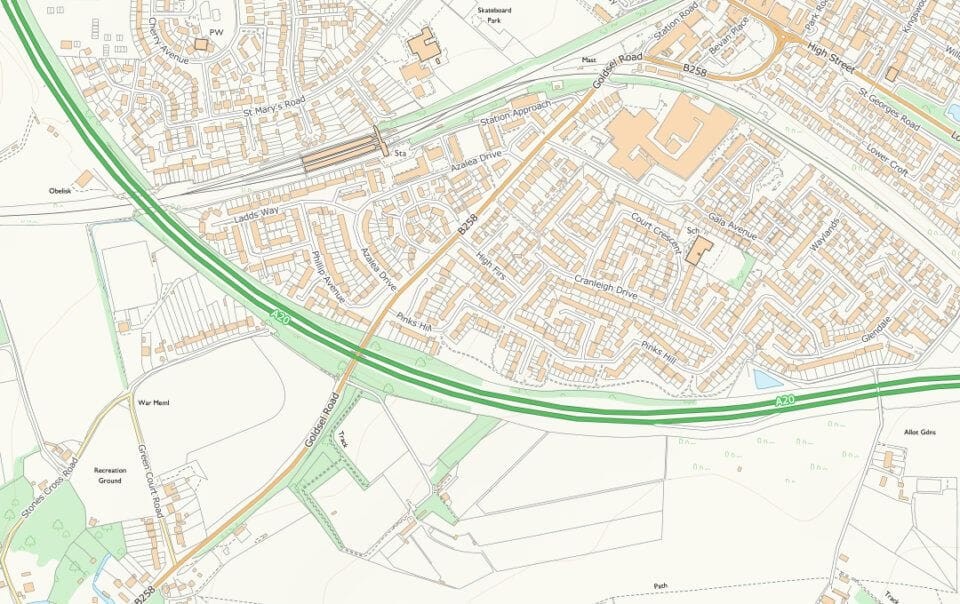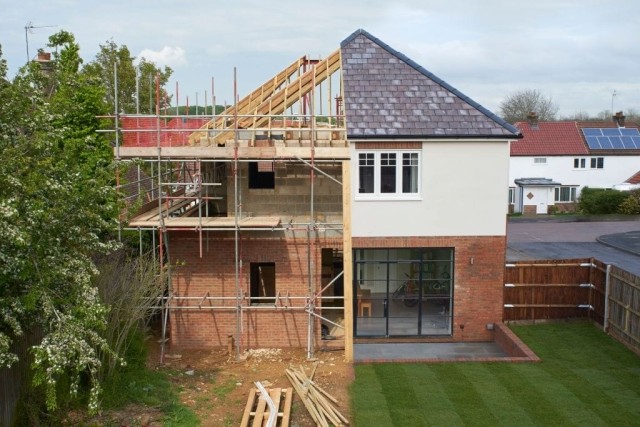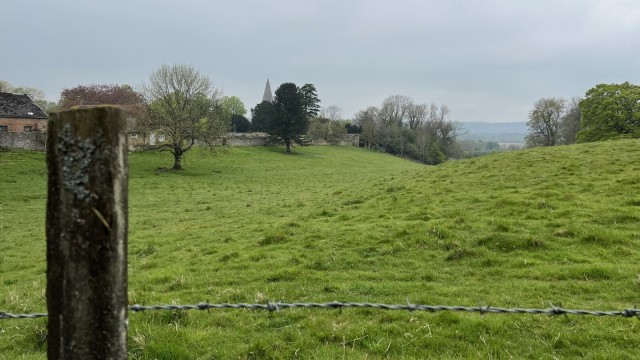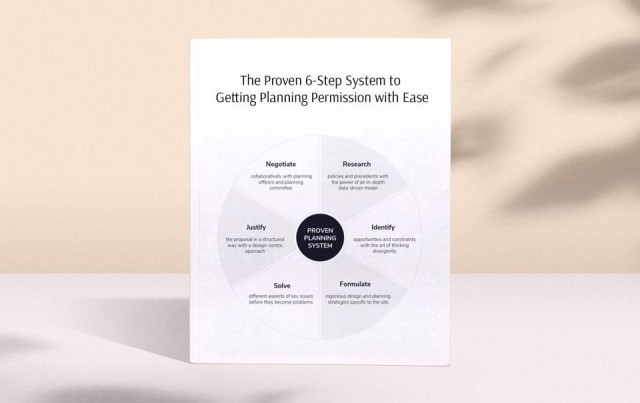Read next
The latest news, updates and expert views for ambitious, high-achieving and purpose-driven homeowners and property entrepreneurs.


If you’re looking to build a new home, you’re probably on the hunt for newer, better ways to find sites for development.
To help give you an edge, we’ve provided a list of the top eight ways you can spot areas of opportunity.
Let's get started…
There are several tried-and-tested tactics for finding a perfect piece of land for development, but if you’re a self-builder, nothing beats walking around town on your own two feet. Choose a neighbourhood and set aside some time to search the area for the perfect development site.
While you’re out and about, be sure to take plenty of pictures and jot down some notes, including the address and any notable sites that match your requirements. If you’re feeling ambitious, you can even use a high-resolution Ordnance Survey map to help you locate sites that aren’t visible from the street.
You might also want to consider your own garden – or a friend’s garden – as a potential site of development. If you see a large garden in your neighbourhood, you can knock on the door and start a conversation with the owner.
Here’s the takeaway: sometimes the best opportunity for development is hidden in plain sight. You just have to get out there and find it.
After taking to the streets, you’re ready to do some research. Check out the local planning authority’s website to determine whether the land is already taken. And if you can’t find anything there, you might want to do a quick search on the Land Registry website – though you’ll have to pay a small fee.
The Brownfield Land Registry is also a good resource. Brownfield sites are ones that have or had buildings on them and that the council thinks is suitable for future development. People normally think of "brownfield" as old factory or warehouse sites but in the UK it includes housing and offices and shops.
To locate land vendors, you can use one of the many "plot finder" websites. There are thousands of plots on PlotBrowser, PlotFinder and PlotSearch. The Land Bank Partnership’s website is particularly useful for tracking down land with planning consent in the south of England. You could also reach out to a planning office in your area to find land that already has planning permission.
There are a number of other websites you can use as well: Rightmove, Primelocation, Knight Frank or Allsop, to name a few. Whichever websites you choose, be sure to set up notifications so you’re constantly in the loop. You never know when the right piece of land will come along. And if you’re on a website that’s connected to an agent, be sure to call them and introduce yourself.
It’s a good idea to set aside a chunk of time to do some thorough research. Take a day or two to get a sense of your options on the web.
Researching the planning history is relatively straightforward. All you need to do is visit the Planning Register of your local planning department. This will contain all the information regarding recent planning applications at the site in question.
By doing this, you can even find out whether an applicant is in the process of applying for planning permission for a particular site. Most of the time, lands destined for sale won’t be put on the market until the planning application has been approved, so you can be one step ahead.
Here’s a tip: if you notice that the application is for outline planning permission, there’s a good chance the land will go up for sale. The logic is simple: there’s no need for detailed planning drawings if the seller has no plans to build.
Finally, if you can find land that already has consent to build, you may want to jump on it. With pre-approved land, you can get to work right away.
If you can’t make the time to do your own search or would rather someone else do the legwork, you can reach out to a seasoned estate agent – one with experience in property development.
When it comes to finding a trustworthy estate agent, you want to have a detailed plan for acquisition and development. Because estate agents are a common resource, they tend to be surrounded by a trusted circle of developers, and breaking into that group can be difficult. That’s why it’s important to prove your worth to the agent right away.
For example, you can promise them a piece of the pie once you start developing on the land in question; and if you have a plot in mind, you can show them the site to whet their appetite. You should also be ready to hear their pitches if they have any.
The bottom line, when it comes to estate agents, is this: meet them face to face and show them your value at the get go. In the end, it’s about networking and proving your worth.
The same basic principle holds true for development agents. This type of agency specialises in development sites and tends to operate on a global scale, so you need to be ready to get out there and shake hands.
A development agent needs to see what you have to offer right away. If you can show your value, then you might start receiving phone calls about undeveloped land – which, in the end, is all you need.
Once again: it’s all about meeting the right people and illustrating your value.
Auctions are a great way to find new land for development, but be wary of committing before visiting the site. You may find, on arrival, that there are many issues with the land that prevent you from cashing in on your investment.
That aside, there are a few things to consider when it comes to auctions.
The bottom line is this: you can save a lot of money at an auction, but you have to be ready for a quick turn around.
When public land goes up for sale, it must be advertised. The government and local council are not permitted to sell a site off-market, as regulations require public sales to be fully transparent every step of the way.
To find these sites, you can check the local council's website, as they will have all the information pertaining to the site. It is common for public land to be sold by a development agency, so this is another chance for you to rub shoulders with top-notch development agents.
Alternatively, you can use the Government Property Finder to locate government-owned property, buildings or land in the UK. This resource provides a comprehensive database of available sites, offering potential developers an additional avenue for identifying promising opportunities.
At bottom, public land could be a good option for developing homes because the process is fully transparent.
No matter what, you need to be careful and do your due diligence when seeking out land for development. Some people go through all the trouble of doing the research, buying the land and paying tens of thousands of pounds, only to find that they can’t secure planning permission for the desired proposal.
To ensure the best possible outcome for your project, it is crucial to engage a reputable architecture and planning practice with a proven track record in securing planning permission. Commissioning a feasibility study from such experts before acquiring the site will provide invaluable insights and significantly enhance your project's prospects.

Urbanist Architecture’s founder and managing director, Ufuk Bahar BA(Hons), MA, takes personal charge of our larger projects, focusing particularly on Green Belt developments, new-build flats and housing, and high-end full refurbishments.
We look forward to learning how we can help you. Simply fill in the form below and someone on our team will respond to you at the earliest opportunity.
The latest news, updates and expert views for ambitious, high-achieving and purpose-driven homeowners and property entrepreneurs.
The latest news, updates and expert views for ambitious, high-achieving and purpose-driven homeowners and property entrepreneurs.










We specialise in crafting creative design and planning strategies to unlock the hidden potential of developments, secure planning permission and deliver imaginative projects on tricky sites
Write us a message